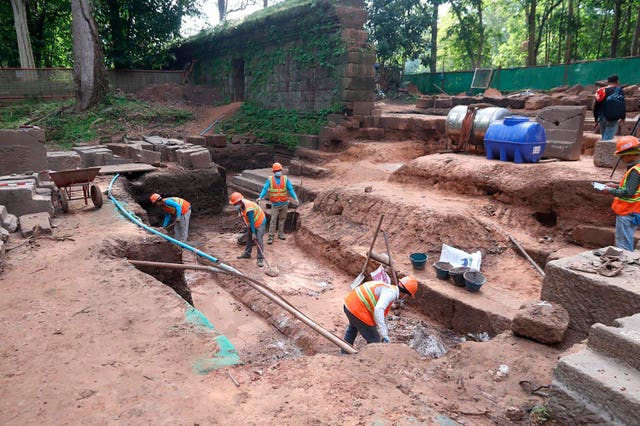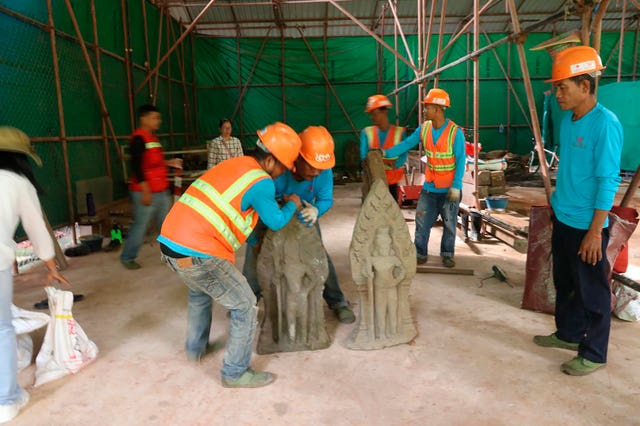Cambodian archaeologists discover centuries-old statues at Angkor Unesco site
The statues depict guardians standing at attention and vary in size from about 39 to 43 inches.

Archaeologists in Cambodia have unearthed a dozen centuries-old sandstone statues in a “remarkable discovery” at the Angkor World Heritage Site near the city of Siem Reap, authorities said.
The statues — depicting so-called “door guardians” — were discovered last week near the north gate leading to the 11th-century Royal Palace at Angkor Thom, the last capital of the Khmer Empire, said Long Kosal, spokesman for the Apsara National Authority – the government agency that oversees the archaeological park.
Teams were assessing the ancient gate’s structure and searching for fallen stones around the portal on the north side of Angkor Thom, one of four entrances to the complex, when the discovery was made.
The statues depict guardians standing at attention and vary in size from about 39 to 43 inches.

“Experts believe these door guardian statues exemplify the Khneang Style, aligning with the construction period of the 11th-century palace,” the Apsara National Authority said.
Angkor Thom is part of the Angkor Archaeological Park, a complex that sprawls over some 155 square miles, named a Unesco World Heritage Site in 1992 and one of south-east Asia’s most popular tourist destinations.
It contains the ruins of Khmer Empire capitals from the ninth to 15th centuries, including the temple of Angkor Wat.
The site, near Siem Reap, about 200 miles north west of the capital, Phnom Penh, drew more than 500,000 international visitors in the first half of 2024, according to Cambodia’s Tourism Ministry.
The archaeological dig was a collaborative project between Apsara and the China-Cambodia Government Team for Safeguarding Angkor, Apsara said.
Following the discovery of the statues, the archaeological team carefully documented their positions before removing them for cleaning and restoration.
They will eventually be returned to their original locations, authorities said.

Cambodia has benefited from a trend that in recent decades has seen the repatriation of art and archaeological treasures taken from their homelands.
In August, it celebrated the return of dozens of artefacts from museums and private collections abroad.
It has also come under criticism for efforts to clean up the Angkor site, which has involved relocating thousands of families in what Amnesty International has condemned as a “gross violation of international human rights law”.
At its meeting in July, the UN’s World Heritage Committee recommended that Cambodia invite a new team of experts to monitor the situation.





